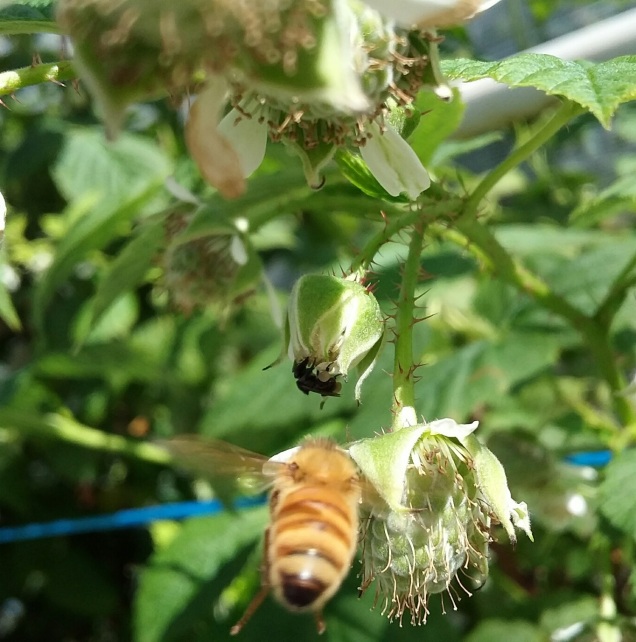I haven’t written for The Conversation (TC) for a while, and this article was a new experience for me: a commission via Twitter! A TC editor saw a live tweet from a talk I gave at a conference in April (where I mentioned that Australian almond growers rent honey bee hives to pollinate blossoms), and contacted me to write a story elaborating on the theme.
Read the story here, covering the basic ins and outs of hive rental, as well as the important role of wild pollinators in crop pollination, which we still know very little about.
So how does it work as an author? Most of my TC articles were published the usual way, after submitting a pitch (and I’ve submitted quite a few pitches that were rejected). I’ve also had a couple of direct commissions and a couple of co-authorships.
Once you’ve received an approved brief for a story, you get a week or so deadline to submit your article (yes, you can ask for an extension). Once you’ve submitted your draft, it can take days to weeks for the editors to go over your article, so don’t stress if you don’t hear back straight away. You can also still make minor edits during that period if needed. I really like the ‘readability’ score that shows at the top of the page, flagging when there’s too much waffle going on in your text!
After the editors have looked over your piece and made comments and changes, you will be notified to approve the final copy. This gives you one last chance to go over the piece thoroughly. Make sure to check for typos & errors or any editorial changes that affect scientific clarity (I’ve published 11 TC articles and never had a major problem with editorial changes, but I have missed a few typos!).
You’re not usually told how long it will take for your article to be published, but be prepared for media enquiries when it goes online (even if you’re on holidays, like I was last week!). This article was published just over a month after I submitted it, whereas other articles have appeared online within a week.

© Manu Saunders 2018